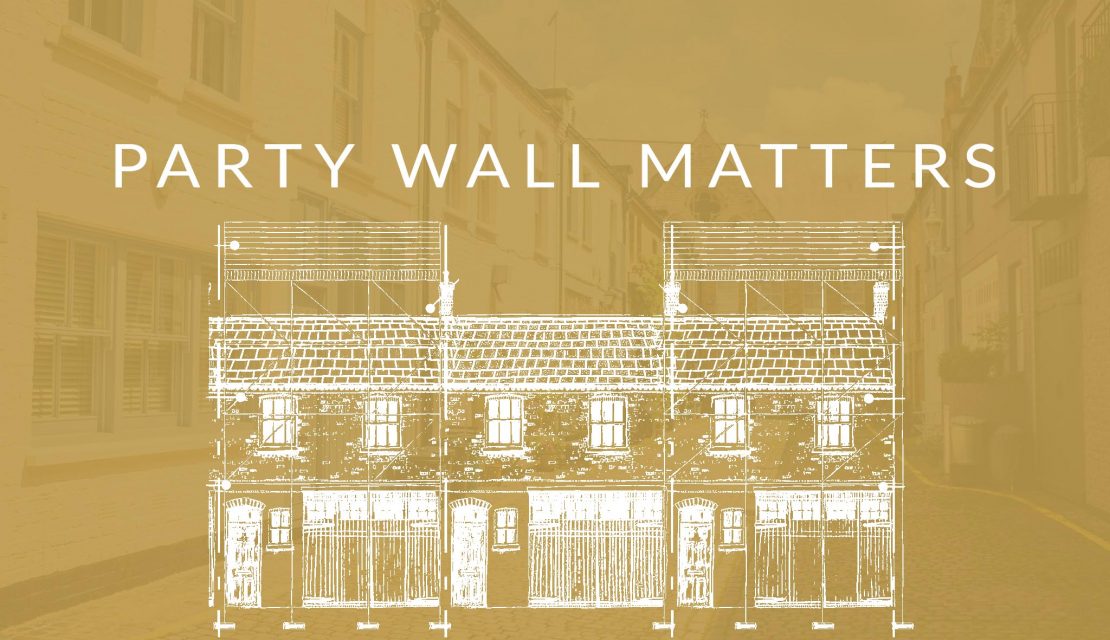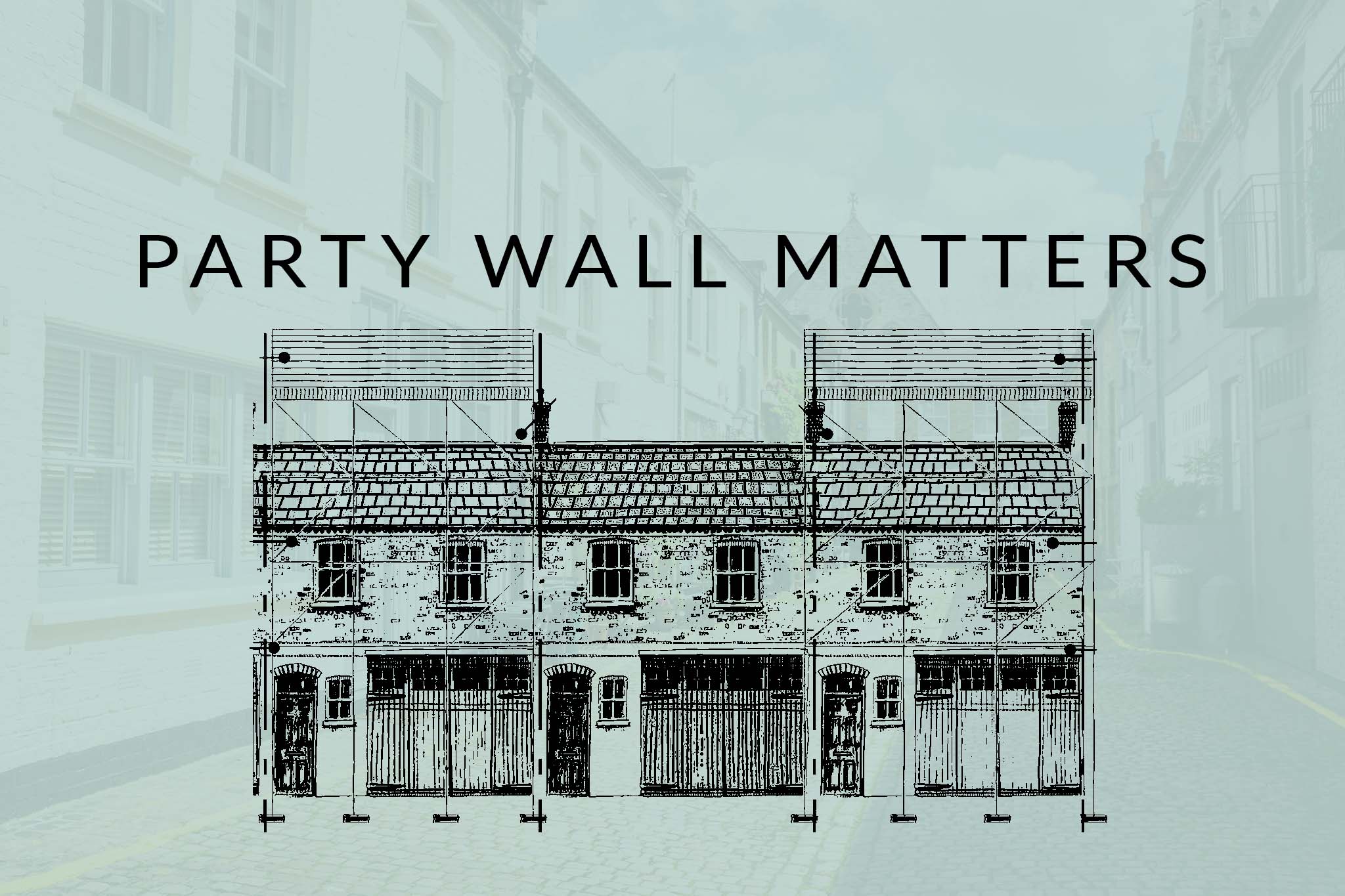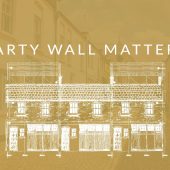Basic Procedures for Mews Owners (Part 2)

The Posts
This is the fifth in a series of 10 posts about Party Wall matters specific to London Mews. Each post is written with the Mews owner in mind, either as someone carrying out development works (referred to in the posts as a ‘developer’) or as someone who finds the development works occurring next door (referred to in the posts as a ‘neighbour’).
This post addresses Party Wall legislation and procedures in more detail. Three following posts deal with the practical application of the legislation; typical Party Wall works and other possible issues for Building Owners and their neighbours.
Glossary (Continued from Post 51A/2/4)

Building Owner – developer or home owner doing the work; referred to as a ‘developer’ hereafter.
Adjoining Owner – neighbour who share party wall or who is within 3/6metres of the excavations below the Building Owners property; referred to as a ‘neighbour’ hereafter.
Surveyor(s) – the Act tries to discourage persons representing themselves by requiring the appointment of a surveyor or three. The one or three representing two alternative approaches whereby both neighbour and developer agree a single surveyor to deal with matters for them, or both have their own surveyors and they in turn agree on a third surveyor to adjudicate and y matters of dispute they refer to him. All surveyor appointments must be someone other than the Building Owner or the Adjoining Owner, to ensure each will Act on a statutory basis and in an independent and impartial manner.
Schedule of conditions – this is the record (survey) the surveyors take of the condition of the neighbours property before any works are carried out and that is used as reference should any damage be noted after the works are complete. Evidence is used to determine if the works next door caused the damage or if the damage would have been there any where due to normal wear and tear. Generally this is quite easy for experienced surveyors to determine and any dispute between them can be determined by the third surveyor. The damage can either be dealt with by agreement of a repair to be carried out or if the neighbour prefers by payment of compensation in lieu of the repair.
The Party Wall Award – the document that brings together all that is agreed between the surveyors in respect of the time and manner of the notifiable works. It is generally 5 or 6 pages long and will contain clauses setting out who is who, what is what and when it must all be done. As with the notices the award adopts a fairly arcane legalese which contains a superfluity of WHEREAS clauses. They are not always easy to read but in simple terms set out what the developer is allowed to do and what in consideration of this the neighbour can expect.
SEE FIG 51A/7 BELOW
PARTY WALL AWARD
THE PARTY WALL etc. ACT, 1996
To be published to the Appointing Owners under Section 10(14)
BUILDING OWNER’S PROPERTY: Mews 2
ADJOINING OWNER’S PROPERTY: Mews 1
BUILDING OWNER: Owner of Mews 2
ADJOINING OWNER: Owner of Mews 1
WHEREAS The Building Owner is the Owner within the meaning of the Act of the premises known as Mews 2.
And the Adjoining Owner is the Owner within the meaning of the Act of the premises known as Mews 1.
AND WHEREAS the Building Owner did on the 1st January 2018 give Notices to the Adjoining Owner of his intention to exercise rights given to him by the Party Wall etc. Act, 1996 sections 2(2) a, b, e, f, g, j, k and l and n and 6 (1) by exercising works as more particularly defined in the Notices.
AND WHEREAS the Adjoining Owner did not consent to the works within 14 days of the service of the notice a dispute has arisen. The provisions of Section 10 of The Act shall have effect, with surveyors appointed in writing for both owners.
The surveyor appointed by the Building Owner is:
Name: Martyn J Brown, MRICS MCIOB MNAEA MARLA MISVA
Address: MBA Surveyors, 27 Old Gloucester Street, London, WC1N 3AX
The surveyor appointed by the Adjoining Owner is:
Name: A. N. Other
Address: Modest House
AND WHEREAS the surveyors appointed and named above have in pursuance of Section 10 (1) (b) of the Act agreed upon and hereby select to act as Third Surveyor.
Name: Eminent Surveyor
Address: Swanky Chambers
Or in the event of his being unable or unwilling to act and their being unable jointly to agree upon a substitute the surveyors have agreed that another Third Surveyor shall be appointed by the Appointing Officer of the relevant Local Authority in accordance with Section 10(8) of the said Act.
NOW WE, being two of the three Surveyors so appointed, having considered the proposed works and having inspected that part of the adjacent premises more likely to be affected by the works, DO HEREBY AWARD AND DETERMINE as follow:-
1. DEFINITION
1.1 THAT the wall between the Building and the Adjoining Owner’s building is deemed to be a Party Wall within the meaning of the Act.
1.2 THAT the said property as described in the attached schedule of conditions is sufficient in all respects for the present purposes of the Adjoining Owner.
1.3 Schedules of Condition
THAT the condition of the adjacent parts of the adjoining building is as described in the Schedules of Condition dated 2018 attached hereto and signed by the appointed surveyors and shall form part of this Award.
-
- Details of the Works:
THAT the documents referred to on the Document Register attached hereto which are signed by us the said two surveyors shall form part of this Award.
2. THE WORKS
THAT fourteen days after delivery of the signed Award but not before the expiration of the Notice period the Building Owner shall be at liberty, if he so chooses but without any obligation to proceed with the works in accordance with the appended drawings as referenced in the document register attached, such works being :-
- Remove projections from the party wall in line with extensions – including projecting toes/corbelling to the existing party wall and party fence wall foundations.
- Excavations of foundations as part of the extension works, including enclosing onto the basement party wall foundations and all temporary and permanent supports and damp proofing as necessary as part of the works.
- To cut openings in the party wall and fix steel beams on padstones or steel plates to support extension and alterations. Also allow to fix supporting connections at extension wall junctions.
- To remove walls/floors and the like from the party wall face.
- To raise the party wall and party fence wall to enclose the rear extension and the side extension at first floor.
- To execute any other works incidental to the above – including any maintenance and weatherproofing works to the party parapet at main roof level and works as is required to comply with Building Regulations.
- Etc. etc.
Fig 51A/7 – Extract from Typical Party Wall Award
Legislation
By way of further explanation of the legislation, the Party Wall etc. act 1996 is the latest in a series of Acts of Parliament dealing with Party Wall matters. As the frontispiece of the Act shown above makes clear, in addition to party walls, the Act deals with matters beyond this such as excavations within close proximity to the neighbours Mews or structure.
The Act is considered to be an enabling Act, as it is primarily intended to facilitate building works. It is designed to allow the person who wishes to carry out the works (the developer) to do so providing the neighbours are informed and their rights upheld.
As well as containing mandatory timeframes for the notice periods, The Act provides various benefits and safeguards for the neighbour to ensure that their property is adequately safeguarded during the construction works by the appointment of one or more surveyors.
Once appointed the surveyors (or the jointly the agreed surveyor) will draw up an Award ( see Fig 51A/7) which details methods of construction, restrictions on noisy works and most importantly of all, the clear identification of any damage caused during the course of the works.
The Act is designed to avoid disputes between neighbours by ensuring that all matters of contention are agreed and that a formal agreement is in place prior to the works starting.
Whilst minor alterations and repairs may not require a party wall notice, works in Post 51B case studies which involve excavations or physical alterations to the party wall will require formal notices to be served and thereafter will likely result in surveyors being appointed and an award being agreed.
Neighbour – What to do when the developer tells you about their works
Overview
If your neighbour (the developer) wishes to carry out any of the works described in the typical Mews case studies contained in these 5 posts, they will have a statutory duty to tell you about their building work as it is near or on your shared property boundary, or it affects the party wall. To do so they must send you a party wall notice.
Procedure
Receiving this formal notice through the post can seem daunting but it is unquestionably better than not receiving such a notice. Remind yourself that when you receive a Party Wall Notice it indicates that your neighbour intends to comply with his/her statutory requirements, rather than ignore them.
The Party Wall Notice should specify what works your neighbour wishes to undertake. You must respond within 14 days. If you ignore the Notice, a surveyor can be appointed on your behalf without your consent.
The purpose of the Act is primarily to allow the developer to undertake works to their property, but the Act also allows neighbours to have some say on what works can be carried out and to have a “Schedule of Conditions” recorded of your property prior to the commencement of works. This will ensure that if any damage is caused it can be determined if the damage was caused by the building works carried out next door and the cost of repairs will be met by those doing the work.
You can respond to the notice in one of three ways:-
1) Concur (no surveyors are appointed) – to allow the work to continue by issuing a positive acknowledgment of the notice.
If the works are straightforward, minor and non-structural (which is not the case with roof extensions or basements), you probably do not need to engage a surveyor at all; you can simply ‘concur to the works’. This will enable the works to commence straight away. However, if any damage is caused or disputes arise, it is always more difficult to get the damage repaired. You will save your neighbour the cost of the surveyors fee.
2) Dissent and appoint a single surveyor – to stop works until at the very least a schedule of conditions is carried out by issuing a negative acknowledgement of the notice.
You may dissent from the works and agree to the surveyor suggested by the Building Owner. This surveyor then becomes ‘agreed’ surveyor should arrange to carry out a Schedule of Conditions, including photographs and draw up an Award. If the suggested surveyor is acting as project manager for the Building Owner we would strongly recommend that you do not appoint them as an agreed surveyor.
It is important to note than the surveyor should not work for either party, a Party Wall Surveyor should not work for a client, he simply administers the act and he must do this impartially and fairly. You should have confidence in the impartiality of the agreed surveyor, if you have any doubts about the suggested surveyor’s impartiality simply suggest to the Building Owner that he accepts your preferred surveyor in order to reduce his cost, this is after all what he is asking you to do.
Please note that if an agreed surveyor (a tribunal of one) is used you cannot refer any disagreement to the third surveyor, your only course of action is to appeal against the award in court.
With all surveyor appointments the agreed surveyor will ensure that the risk to your property is minimised, that accurate photographs are taken and that a comprehensive Schedule of Conditions is recorded. A formal party wall award is issued before works start, which details the party wall terms and conditions and includes full construction details, drawings and method statements together with the schedule of condition etc.
3) Dissent and appoint your own surveyor – to stop works until a tribunal of three surveyors are appointed (the developers surveyor, your surveyor and the third surveyor) you should issue a negative acknowledgement of the notice.
This is the standard procedure when you want your own surveyor and is generally followed when works are not straightforward, involve major changes to the Mews or are otherwise structural i.e. most significant internal alterations, roof extensions or basements.
The costs for the surveyors are paid by the developer – see below.
Once the appointments are made you cede matters to your surveyor to ensure you do not act in an impartial manner. The two surveyors will then take the schedule of conditions and produce the award in exactly the same way as the agreed surveyor.
Developer – What work must you must tell your neighbour about
Overview
As the developer the official guidance notes for the Act advise that you must tell your neighbours if you want to carry out building work near or on your shared property boundary, or party wall.
Procedure
If you are intending to carry out major works as described in case studies 1,2 and 3, to your property i.e. an extension, a loft conversion or a basement conversion, you will need to issue Party Wall Notices to your neighbours.
Notices will be required if you wish to build a wall on (or across) a boundary, if you wish to cut into the party wall and insert a beam, remove a chimney breast, or if you wish to excavate within 3 or 6 metres of an adjoining property (see above determinants).
The Notice must indicate which sections of the Act you wish to carry out the works under, and may need to include drawings detailing the works you intend to carry out.
The Act primarily intends for you to facilitate lawful building works. Neighbours may try to disabuse you of this right but it is very unusual for an Adjoining Owner to be able to prevent works from being carried out (unless the work contravenes Planning or other statutory approvals). Primarily protect is provided in the form of a “Schedule of Conditions” taken of the neighbours property prior to the commencement and of course, the opportunity to view and comment on the details of the development prior to the works commencing.
Who pays the fees?
Ninety nine times out of a hundred the developer will pay all surveyors fees. The exception being when the Third Surveyor (following a referral to him) decides otherwise or when a neighbour issues a counter notice following on from the issue of the original notice as they may attract costs in respect of the neighbours works.
Further advice from MBA Surveyors
This post and the others in this series aim to be an introduction into the world of party wall matters. In no way do they attempt to provide specific advice on specific party walls issues relating to any particular mews property. Being general in nature it is no substitute for any professional advice you will need with your own Mews property.
If you are unsure on any Party Wall matters please contact our sister company MBA Surveyors
Telephone on 0207 419 5033 or alternatively, contact us by e-mail sending the drawings you have or notice you may have received on info@mbasurveyors.com
We will then be happy to advise you further.
Additionally and for more information on the legislation please refer to the Government’s Explanatory Booklet.
Party Wall etc. Act 1996. http://www.legislation.gov.uk/ukpga/1996/40/contents




